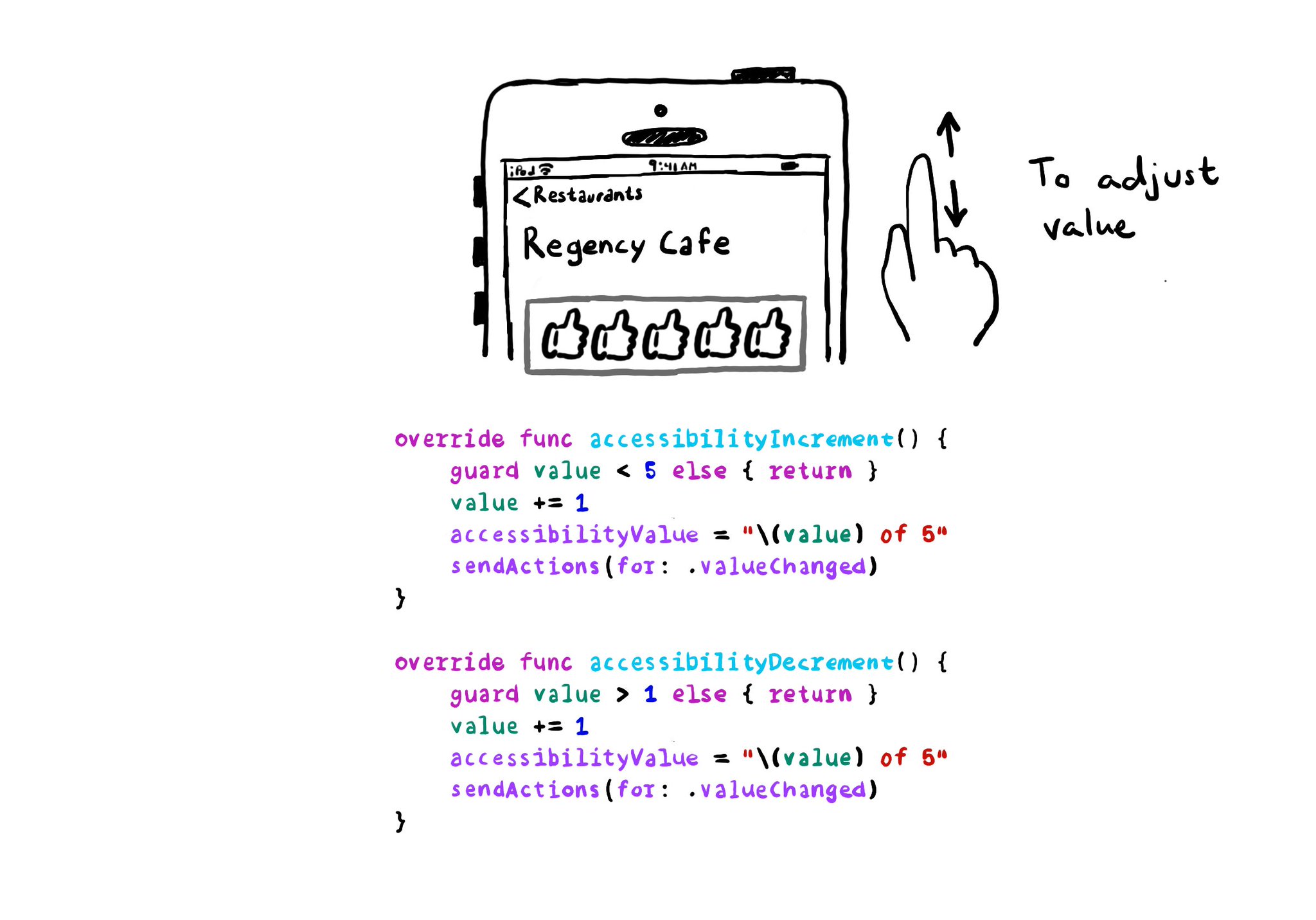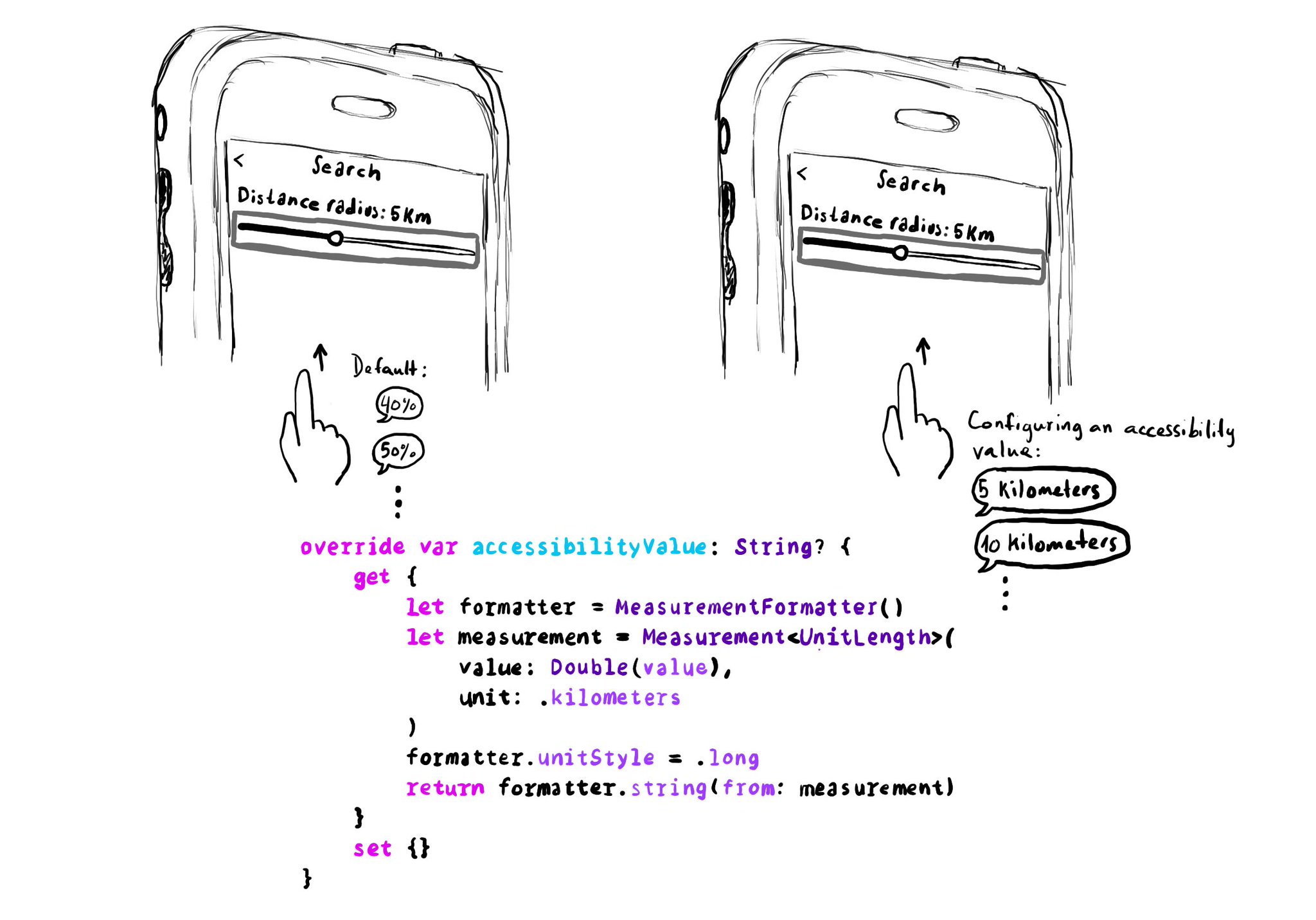With VoiceOver, you can swipe up/down to increase/decrease the value of adjustable components. You need to implement accessibilityIncrement() and accessibilityDecrement() accordingly, and configure an accessibility value that makes sense.

override func accessibilityIncrement() {
guard value < 5 else { return }
value += 1
accessibilityValue = "\(value) of 5"
sendActions(for: .valueChanged)
}
override func accessibilityDecrement() {
guard value > 1 else { return }
value -= 1
accessibilityValue = "\(value) of 5"
sendActions(for: .valueChanged)
}Links to the official documentation:
You may also find interesting...
If you are developing a custom component, that can change value, chances are that it will need the adjustable accessibility trait (VoiceOver will say: "Adjustable"). Think of a component that lets you rate from one to five thumbs up (or stars).

UISliders are adjustable, and its default accessibility value is represented in percentages. But that's not always the best format to express a value. Consider a slider to select a distance radius. Miles or km seem a more appropriate unit.
Example code in the image:
```swift
override var accessibilityValue: String? {
get {
let formatter = MeasurementFormatter()
let measurement = Measurement

VoiceOver will traverse elements from left-right, and from top-bottom. If for any reason you need to change that order, in SwiftUI you can change the accessibility sort priority. A higher priority number in the container means it will go first.